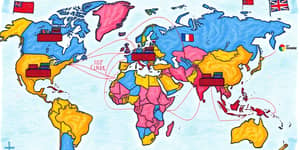
In an era of interconnected economies, the battle over exchange rates shapes global prosperity. Nations vie for advantages in trade by strategically weakening or strengthening their currencies. This complex interaction influences investors, consumers, and entire industries worldwide.
The term “currency war” emerged to describe competitive efforts by governments to devalue their money. By reducing exchange rates, exporters enjoy cheaper goods abroad and stimulated domestic demand. However, such policies rarely go unanswered; rival states often respond in kind, spiraling into tit-for-tat moves.
In the 1930s, amid the Great Depression, many countries abandoned the gold standard fueled exports and sought recovery. Subsequent decades saw sporadic episodes, but the modern interpretation gained traction in 2015. When the European Central Bank launched a massive quantitative easing program, commentators debated whether it amounted to quantitative easing programs sparked controversy and competitive devaluation.
Forex markets respond to a tapestry of economic and political signals. Traders and policymakers watch central bank decisions, inflation data, and geopolitical developments for clues about future currency trajectories. Volatility often spikes around major announcements or sudden shifts in sentiment.
While lower exchange rates can boost exports, they carry hidden costs. Consumers face higher import bills, eroding purchasing power. Additionally, companies reliant on foreign inputs see rising production expenses.
Devaluations can hamper long-term growth by spurring inflationary pressures and undermining confidence. For retirees and savers, the story is more dire: hard-earned portfolios denominated in devalued currencies suffer in real terms, threatening living standards.
Landmark episodes of currency competition illuminate the stakes. In the 1930s Great Depression, nations unilaterally devalued their money to protect domestic jobs. The aftermath saw deteriorating trade relations and deepened economic malaise.
Fast forward to 2015: China surprised markets by devaluing its yuan to bolster export competitiveness. This action sent shockwaves through Asia and beyond, reigniting fears of a modern-day currency conflagration. Observers noted how competitive devaluations to gain trade advantages can produce unintended global fallout.
As central banks approach policy thresholds, talk of renewed currency skirmishes intensifies. In 2025, with some rate cuts on hold and political tides shifting, experts anticipate fresh bouts of volatility. Leadership changes, particularly in large economies, could tilt the balance between strength and weakness.
Trade negotiations and tariff disputes remain wildcards. When nations wield currency as a tool of influence, they risk sparking unprecedented level of currency volatility that reverberates across stock markets, bonds, and commodities.
Amid the turbulence, prudent participants develop hedging and diversification tactics. By spreading assets across currencies, regions, and asset classes, investors can cushion shocks. Savers should review retirement allocations to account for potential currency shifts.
Ultimately, understanding the mechanics of currency wars empowers individuals. With careful planning and a long-term perspective, one can navigate the fluctuations and protect financial well-being. By anticipating possible scenarios and adopting strategies for prudent portfolio management, investors and consumers alike can face the challenges of a shifting monetary landscape with confidence.
References













